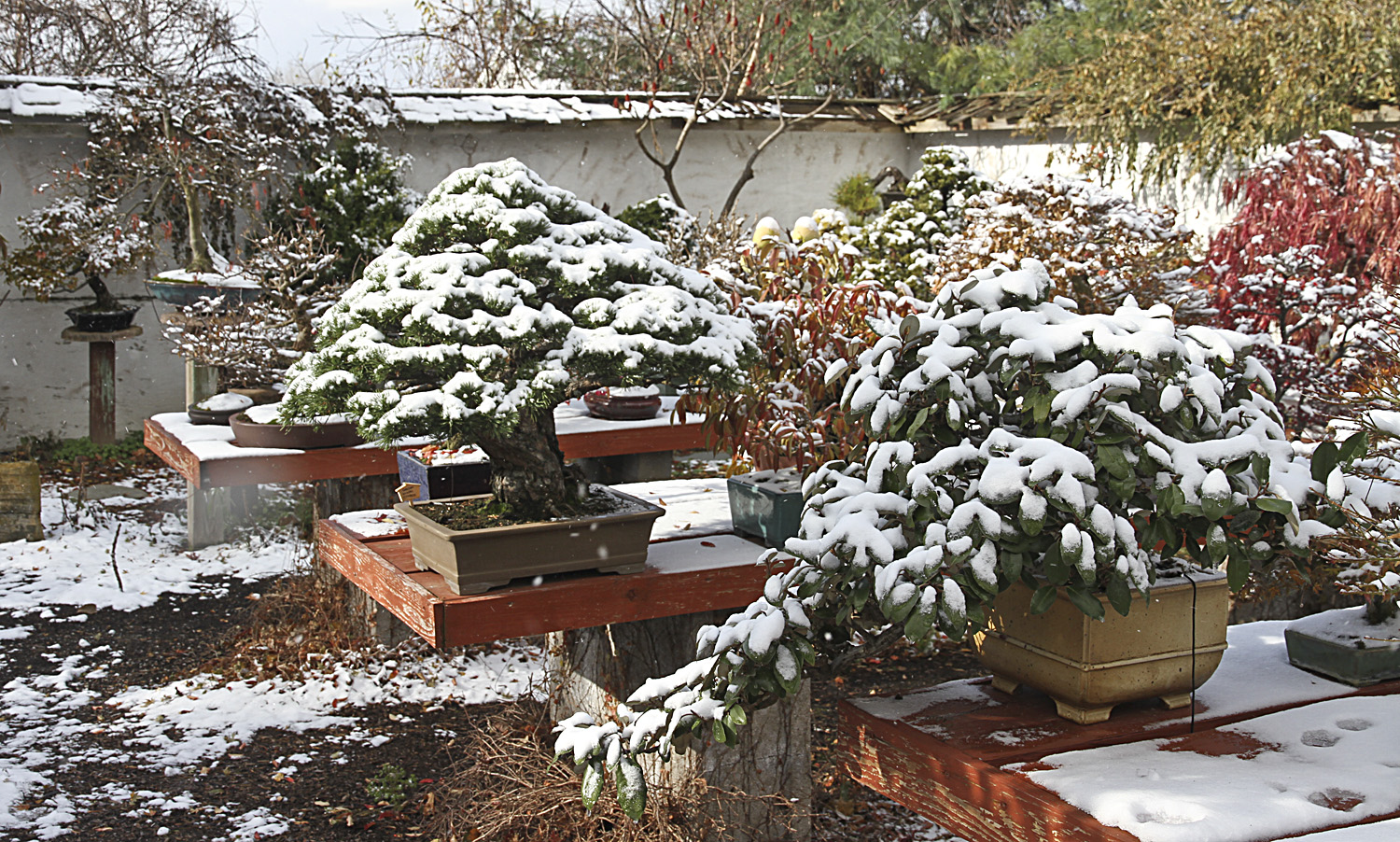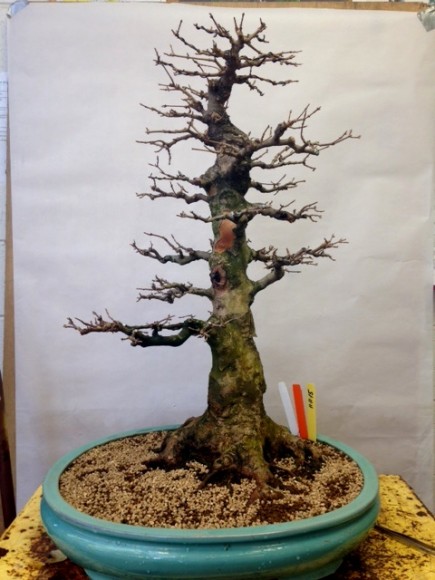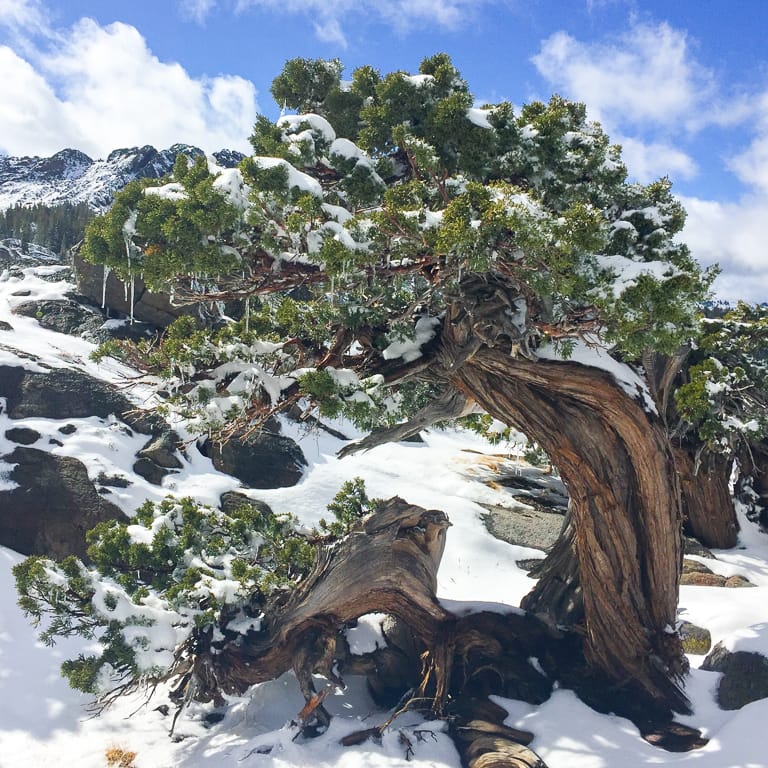Yes, a bonsai tree can survive winter. Proper care and protection are essential for its survival during cold months.
Bonsai trees, like their full-sized counterparts, require specific winter care to thrive. Different species have varying cold tolerance levels. Some bonsai trees can handle freezing temperatures, while others need more protection. Placing the tree in a sheltered area or using mulch can help insulate the roots.
It’s crucial to monitor watering needs, as overwatering or underwatering can be harmful. Using cold frames or bringing the tree indoors can offer additional protection. Proper pruning and fertilizing before winter can also boost its resilience. With the right care, a bonsai tree can endure winter and continue to grow beautifully.

Credit: www.bonsaioutlet.com
Winter Challenges For Bonsai
Winter can be tough for bonsai trees. These miniature trees need special care. Cold weather and frost can damage them. Understanding these challenges can help keep your bonsai healthy during winter.
Cold Weather Impact
Cold weather affects bonsai trees in several ways. Low temperatures can freeze the soil. This makes it hard for roots to absorb water. Bonsai trees can become dehydrated.
Another problem is wind. Cold winds can dry out the leaves. This leads to leaf burn and damage. Protecting your bonsai from the wind is important.
Shorter days also impact bonsai trees. They get less sunlight. This reduces photosynthesis. As a result, the tree gets less energy for growth.
Frost Damage Risks
Frost can cause serious damage to bonsai trees. Ice crystals can form in the cells. This can break the cell walls. The tree may lose leaves and branches.
Frost can also damage the roots. Frozen roots can’t absorb water. This can lead to root rot. Protecting the roots is crucial during frosty weather.
Here are some tips to protect bonsai from frost:
- Move the bonsai indoors or to a sheltered spot.
- Cover the tree with a frost cloth.
- Use mulch to insulate the roots.
Following these steps can help keep your bonsai tree safe and healthy during winter.
Choosing The Right Bonsai Species
Choosing the right bonsai species is crucial for winter survival. Some bonsai trees can endure the cold, while others need a warmer climate. Understanding these differences helps keep your bonsai healthy and beautiful all year round.
Hardy Varieties
Hardy bonsai species can withstand the cold temperatures of winter. These trees are well-suited for outdoor conditions and can tolerate frost. Here are a few examples:
- Japanese Maple (Acer palmatum)
- Chinese Elm (Ulmus parvifolia)
- Trident Maple (Acer buergerianum)
These species have strong root systems and can survive freezing temperatures. They require less protection during winter but still benefit from some shelter.
Tropical Varieties
Tropical bonsai species need warm temperatures to thrive. These trees do not tolerate frost and must be kept indoors during winter. Examples include:
- Ficus (Ficus retusa)
- Jade (Crassula ovata)
- Hawaiian Umbrella (Schefflera arboricola)
Tropical bonsai need a consistent environment with temperatures above 50°F (10°C). They also require high humidity and good light, especially during winter months.
Preparing Bonsai For Winter
Winter can be challenging for your bonsai tree. Proper preparation is essential to ensure its survival. Below are key steps to help your bonsai tree thrive during winter.
Pruning And Trimming
Pruning is essential before winter. Remove dead or damaged branches. This helps the tree conserve energy. Use clean, sharp tools for precise cuts. Trim excessive growth to maintain shape. Avoid heavy pruning in winter. Light trimming is better for the tree’s health.
Soil And Watering Adjustments
Soil conditions change in winter. Adjustments are needed for bonsai tree health. Use a soil mix that drains well. This prevents root rot. Reduce watering frequency. Overwatering can be harmful in winter. Check soil moisture regularly. Keep the soil slightly damp but not soaked.
| Task | Action | Why |
|---|---|---|
| Pruning | Remove dead branches | Conserves energy |
| Trimming | Trim excessive growth | Maintains shape |
| Soil Adjustment | Use well-draining soil | Prevents root rot |
| Watering | Reduce frequency | Prevents overwatering |
- Pruning: Essential for conserving energy.
- Trimming: Keeps the tree in shape.
- Soil Adjustment: Prevents root rot.
- Watering: Reduces risk of overwatering.
Follow these steps to prepare your bonsai for winter. Your tree will stay healthy and strong.
Indoor Vs Outdoor Wintering
Winter can be challenging for bonsai trees. They need special care. The choice between indoor and outdoor wintering affects their survival. This section provides care tips for both.
Indoor Care Tips
Keeping a bonsai tree indoors during winter requires attention.
- Place the tree near a south-facing window for light.
- Maintain the temperature between 50°F and 60°F.
- Use a humidity tray to prevent dry air.
- Water the tree only when the soil is dry.
- Avoid placing the tree near heating vents.
Outdoor Care Tips
Outdoor wintering is suitable for hardy bonsai trees.
- Choose a sheltered spot, away from strong winds.
- Mulch the soil to keep roots warm.
- Water the tree sparingly but consistently.
- Protect the tree with a frost cloth during extreme cold.
- Check the tree regularly for signs of stress.
Protecting Bonsai From Frost
Winter can be harsh for bonsai trees. Protecting them from frost is essential. Frost can damage the delicate roots and branches. Here are some ways to keep your bonsai safe.
Frost Cloths And Covers
Using frost cloths and covers is a simple method. These materials trap heat and moisture. This keeps the bonsai warm. You can buy frost cloths from garden stores. Make sure they cover the entire tree. Secure them with ties or clips. Check the cloth daily. Make sure it stays in place.
Mulching Techniques
Mulching helps protect the bonsai roots. Use organic materials like straw or bark. Apply a thick layer around the base. Mulch keeps the soil warm. It also retains moisture. This prevents the roots from freezing. Make sure the mulch is loose. Do not pack it tightly.
| Method | Materials Needed | Benefits |
|---|---|---|
| Frost Cloths and Covers | Frost cloth, ties or clips | Traps heat and moisture |
| Mulching Techniques | Straw, bark | Keeps soil warm and moist |
- Check the frost cloth daily.
- Apply mulch around the base.
- Secure the cloth with ties.
- Use organic materials for mulching.

Credit: www.chicagobotanic.org
Watering Schedule Adjustments
Winter can be harsh for your bonsai trees. Adjusting the watering schedule is crucial. This helps your bonsai survive the cold months. Let’s look at the changes needed.
Frequency Changes
In winter, bonsai trees need less water. The soil takes longer to dry out. Check the soil moisture before watering.
- Water once a week.
- Use a moisture meter.
- Stick your finger in the soil to check.
Avoiding Overwatering
Overwatering can harm your bonsai tree. Wet roots can rot easily. Ensure good drainage for the soil.
- Use a well-draining soil mix.
- Make sure the pot has drainage holes.
- Avoid letting water sit in the saucer.
Watering in the morning helps. The soil dries out during the day. This prevents root rot. Keep an eye on humidity levels too. This ensures the tree stays healthy.
| Watering Tips | Details |
|---|---|
| Check Soil Moisture | Use a finger or moisture meter |
| Water in the Morning | Prevents root rot |
| Good Drainage | Ensure pot has holes |
Fertilizing During Winter
Winter can be tough for bonsai trees. They need proper care to survive. One key aspect is fertilizing during the cold months. This helps the tree stay healthy and strong.
Nutrient Needs
Bonsai trees have different needs in winter. They need less fertilizer compared to other seasons. Over-fertilizing can harm the tree. It’s important to understand the right nutrients they need.
| Nutrient | Winter Need |
|---|---|
| Nitrogen | Low |
| Phosphorus | Moderate |
| Potassium | Moderate |
During winter, low nitrogen is crucial. It prevents unwanted growth. Phosphorus and potassium help in root development and disease resistance.
Best Fertilizers
Choosing the right fertilizer is essential. Organic fertilizers are often the best choice. They release nutrients slowly. This suits the bonsai’s winter needs.
- Bone meal: Rich in phosphorus.
- Wood ash: Good source of potassium.
- Compost: Provides balanced nutrients.
Using these fertilizers ensures the bonsai tree gets the right nutrients. This helps it stay healthy through the winter.

Credit: bonsaitonight.com
Monitoring And Maintenance
To ensure your bonsai tree survives winter, consistent monitoring and maintenance are essential. Regular checks will help you detect any issues early. This increases the chance of your bonsai thriving through the cold months.
Inspecting For Pests
Inspecting for pests is crucial during winter. Pests can hide in the soil or on the tree. Use a magnifying glass to check the leaves and bark. Look for signs of insects, such as holes or sticky residue. Treat any infestations immediately to prevent harm to the tree.
- Check leaves and branches for pests.
- Use a magnifying glass for a thorough inspection.
- Look for holes, sticky residue, or webbing.
- Treat pests with insecticidal soap if needed.
Checking For Disease
Check your bonsai tree for signs of disease. Diseased trees may have discolored leaves or stunted growth. It’s important to act quickly to save your tree. Remove any affected parts and treat with appropriate fungicides.
- Inspect leaves for discoloration or spots.
- Check the trunk for cracks or unusual marks.
- Remove affected leaves and branches.
- Apply fungicides to prevent the spread of disease.
Regular monitoring and maintenance can keep your bonsai tree healthy. Inspecting for pests and checking for disease are key tasks. This ensures your tree survives the winter and thrives in the spring.
Conclusion
Caring for your bonsai tree in winter requires attention and preparation. Ensure proper insulation and watering. Choose hardy species for better winter survival. With the right care, your bonsai can thrive through the cold months. Follow these tips, and enjoy a healthy bonsai year-round.
Happy gardening!

